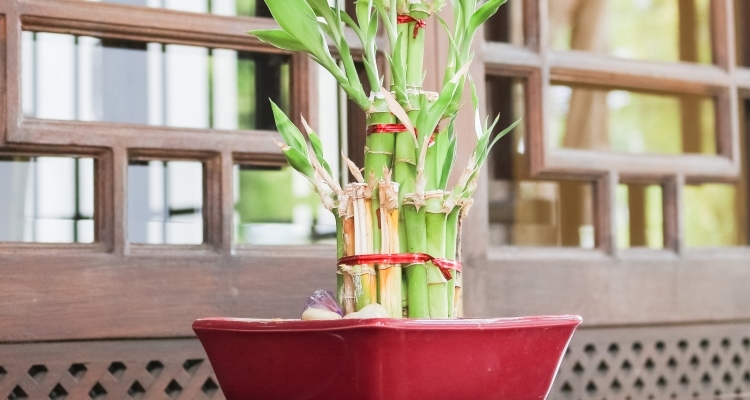
Introduction
Lucky Bamboo, with its elegant appearance and cultural significance, holds a revered place in homes and offices worldwide. However, the sight of yellowing leaves can stir concern among enthusiasts, prompting a quest for answers. In this exploration, we delve into the mysteries behind why your Lucky Bamboo may be turning yellow, uncovering potential culprits and solutions to restore its vibrancy.
Lighting Issues
Insufficient light
Insufficient light can impede the photosynthetic process, hindering the plant’s ability to produce energy and sustain healthy growth. Lucky Bamboo, originating from shaded forest floors, thrives in indirect or filtered sunlight. Signs of inadequate light include pale or faded leaves, stunted growth, and elongated stems as the plant reaches for light sources.
Excessive light exposure
On the flip side, excessive light exposure can lead to sunburn damage, resulting in scorched or yellowed leaves. Lucky Bamboo prefers bright, indirect light but can suffer from direct sunlight, especially during the intense midday hours. Symptoms of overexposure include leaf discoloration, wilting, and brown spots on foliage.
Finding the right balance
Achieving the perfect balance of light is essential for maintaining the health and vitality of Lucky Bamboo. Aim for bright, indirect light without prolonged exposure to direct sunlight. Consider adjusting the plant’s placement near windows or using sheer curtains to filter harsh sunlight, ensuring optimal growing conditions.
Watering Problems
Overwatering
Overzealous watering can spell trouble for Lucky Bamboo, leading to root suffocation and eventual decline. Waterlogged soil deprives roots of essential oxygen, causing them to rot and turn mushy. Signs of overwatering include yellowing or browning of lower leaves, soft or mushy stems, and foul odor emanating from the soil.
Underwatering
Conversely, underwatering poses a threat to Lucky Bamboo’s well-being, subjecting it to dehydration stress and nutrient imbalances. Insufficient moisture uptake can cause leaves to wilt, curl, or turn yellow, signaling the plant’s distress. In severe cases, leaves may become dry and crispy, indicating a critical need for water.
Establishing a watering routine
Establishing a consistent watering routine is crucial for maintaining proper soil moisture levels and preventing water-related issues. Ensure adequate drainage in the pot to prevent water from pooling at the bottom, leading to root rot. Monitor soil moisture regularly, watering only when the top inch of soil feels dry to the touch. Use filtered or distilled water to avoid chlorine and mineral buildup, which can harm Lucky Bamboo over time.
Potting and Soil Issues
Poor drainage
Poor drainage can exacerbate water-related problems, exposing Lucky Bamboo to the risk of root rot and fungal diseases. Soil that retains excess moisture impedes airflow to the roots, creating a breeding ground for harmful pathogens. Symptoms of waterlogged soil include foul odor, yellowing leaves, and wilting despite adequate watering.
Nutrient deficiencies
Nutrient deficiencies can manifest as yellowing leaves, stunted growth, or leaf discoloration in Lucky Bamboo. Soil lacking essential nutrients like nitrogen, potassium, or iron can impair the plant’s ability to thrive. Symptoms may vary depending on the specific nutrient deficiency, but common signs include chlorosis (yellowing between leaf veins), leaf curling, and overall poor vigor.
Repotting and soil amendments
Repotting Lucky Bamboo into a well-draining container with fresh, nutrient-rich soil can help alleviate potting and soil-related issues. Choose a pot with drainage holes to facilitate water flow and prevent waterlogging. Opt for a well-balanced potting mix designed for houseplants or add organic matter like compost to improve soil structure and fertility. Fertilize sparingly with a diluted, balanced fertilizer to avoid nutrient imbalances or buildup.
Environmental Factors
Temperature fluctuations
Temperature fluctuations, especially sudden drops or extremes, can stress Lucky Bamboo and manifest as yellowing leaves. Exposure to cold drafts or temperatures below 50°F (10°C) can cause leaf damage and discoloration. Conversely, prolonged exposure to high temperatures or heat sources can lead to heat stress, resulting in wilted, yellowed foliage.
Air quality and humidity levels
Poor air quality and low humidity levels can adversely affect Lucky Bamboo’s health, causing leaf discoloration and dehydration. Indoor environments with dry air or exposure to heating or cooling systems can lead to moisture loss through transpiration, resulting in yellowing or browning of leaves. Lucky Bamboo thrives in environments with moderate to high humidity levels, ideally around 50% to 70%.
Pests and diseases
Pests and diseases pose potential threats to Lucky Bamboo, compromising its health and vitality. Common invaders include spider mites, aphids, and fungal pathogens, which can cause yellowing leaves, leaf spots, or wilting. Preventive measures such as regular inspections, proper sanitation, and isolation of infected plants can help mitigate pest and disease problems. Consider using natural remedies like neem oil or insecticidal soap to control pest infestations, avoiding harsh chemicals that may harm the plant.
Conclusion
In the intricate world of plant care, understanding the underlying causes of yellowing leaves in Lucky Bamboo is essential for promoting its well-being and longevity. By addressing lighting, watering, potting, soil, and environmental factors, you can effectively troubleshoot issues and restore your Lucky Bamboo to its former glory. Remember to observe your plant closely, making adjustments as needed to ensure optimal growing conditions. With proper care and attention, your Lucky Bamboo will continue to thrive, bringing beauty and serenity to your indoor space.




